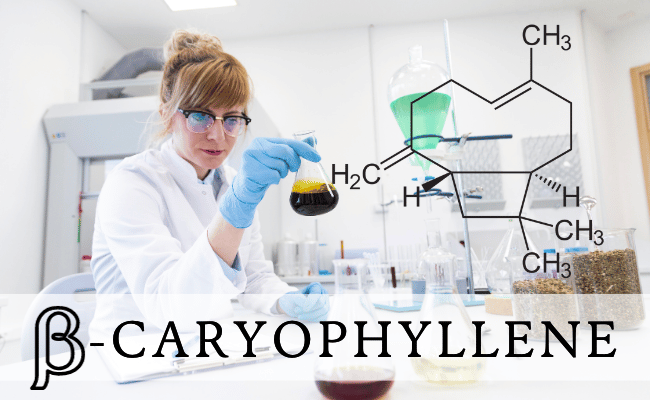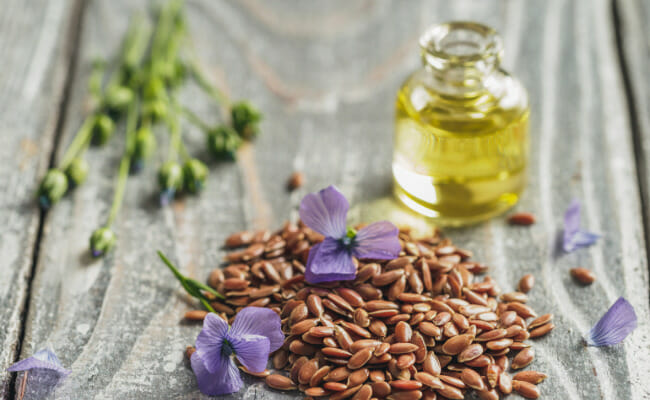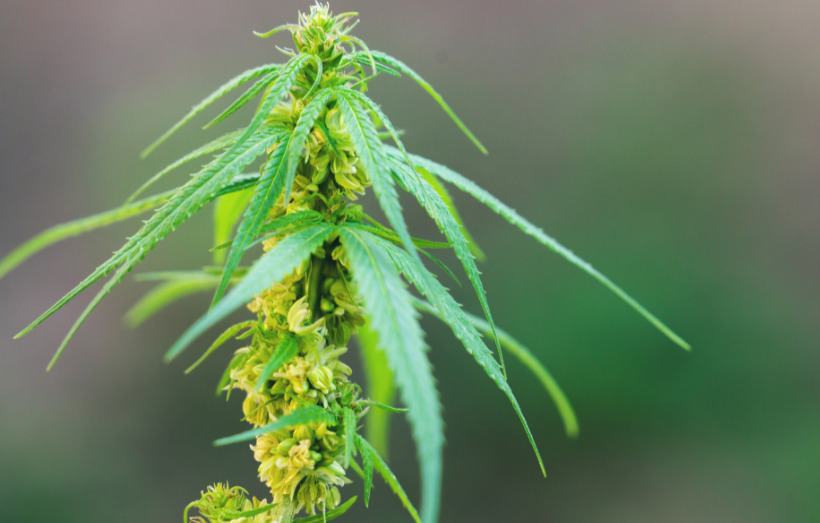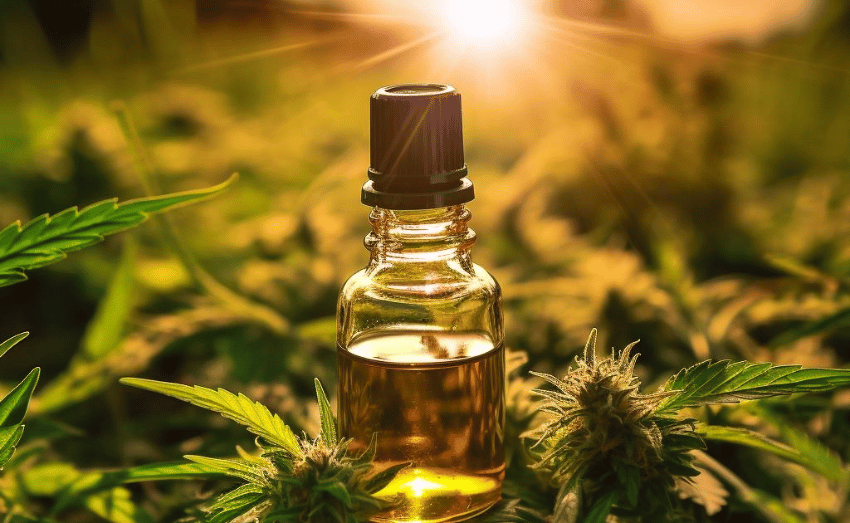Alpha-linolenic acid (ALA), also known as α-Linolenic acid, is an essential omega-3 polyunsaturated fatty acid (PUFA)1, distinct from eicosapentaenoic acid (EPA) and docosahexaenoic acid (DHA), the other two main types of omega-3 fats.
Primarily found in plant-based sources such as flaxseed oil, ALA is an indispensable nutrient due to its role in normal growth and development, cardiovascular health, and brain function.
This review presents a comprehensive analysis of the significance, dietary sources, and precautions associated with ALA consumption.
- Historical Background
- Basic Physiology and Function
- Dietary Sources
- Recommended Dietary Intake
- Nutrient Interactions
- Conversion to Other Omega-3s
- Clinical Implications and Health Benefits
- Deficiency Symptoms
- Interactions and Precautions
- Current Research and Controversies
- Final Thoughts
- FAQs on Alpha-Linolenic Acid (ALA)
Historical Background
The discovery of Alpha-Linolenic Acid (ALA) dates back to 1887 when Austrian chemist Karl Hazura isolated it. Since then, numerous studies have underscored its importance for health, leading to its incorporation in various applications, from dietary supplements to infant formula.
Basic Physiology and Function
Alpha-linolenic acid (ALA) is a plant-based essential omega-3 polyunsaturated fatty acid required for normal health.
- Energy Source: ALA provides a rich energy source, accounting for 9 kcal/g.
- Cellular Architecture: ALA is needed to build cell membranes and provide the starting point for making hormones.
- Physiological Processes: It helps regulate blood clotting, contraction and relaxation of artery walls, and inflammation.
- Neuroprotective Properties: An Omega-3 Fatty Acid with Neuroprotective Properties, ALA protects against rodent models of hypoxic-ischemic damage and shows potential as an anti-depressant.
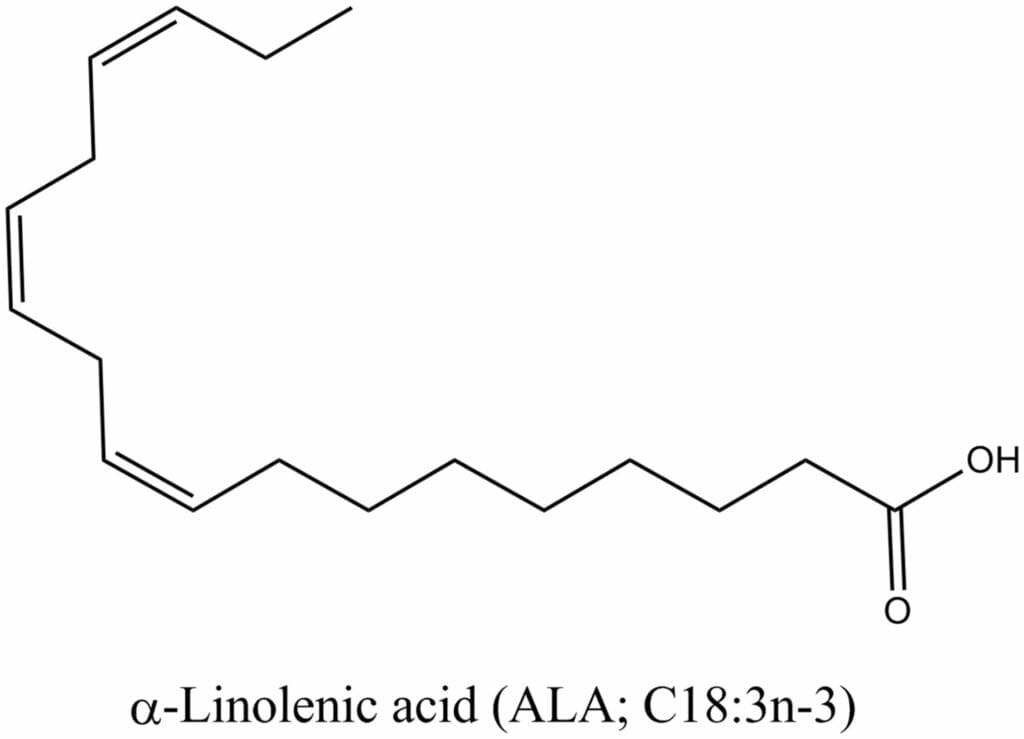
Dietary Sources
While Alpha-Linolenic Acid (ALA) is found in various seeds and oils, certain sources are especially rich:
| Dietary Sources | ALA Content (per tbsp) |
|---|---|
| Flaxseed | 2.2 g |
| Flaxseed oil | 8.5 g |
| Canola oil | 1.3 g |
| English walnuts | 0.7 g |
These plant oils are gifts from the sea2 and terrestrial flora that contribute to Western diets. Other sources include:
- Soybeans and soybean oil
- Pumpkin seeds and pumpkin seed oil
- Perilla seed oil
- Tofu

Recommended Dietary Intake
For optimum health, it’s recommended that:
| Age Group | Recommended ALA Intake |
|---|---|
| Infants (0-12 months) | No specific recommendation; however, ensure infant formula contains ALA. |
| Children (1-3 years) | 0.7 grams per day |
| Children (4-8 years) | 0.9 grams per day |
| Teenagers (Boys 9-13 years) | 1.2 grams per day |
| Teenagers (Girls 9-13 years) | 1.0 grams per day |
| Teenagers (Boys 14-18 years) | 1.6 grams per day |
| Teenagers (Girls 14-18 years) | 1.1 grams per day |
| Adults (Men 19 years and older) | 1.6 grams per day |
| Adults (Women 19 years and older) | 1.1 grams per day |
| Seniors (No specific recommendations) | Maintain consistent intake, especially if there are any heart or cognitive health concerns. |
During pregnancy, intake should be 1.4 grams and while breastfeeding, 1.3 grams3.
ALA intake must adjust according to life stages due to different growth, developmental, and maintenance needs. As the body undergoes physiological changes from childhood to old age, its nutrient requirements evolve. Ensuring appropriate ALA intake at every life stage can support optimal brain function, cardiovascular health, and overall cellular function.
Nutrient Interactions
Alpha-linolenic acid (ALA) does not operate in a vacuum within our diet. Its interactions with other nutrients can either enhance or hinder its physiological roles:
Omega-6 and Omega-3 Ratio
Both omega-6 and omega-3 fatty acids use the same enzymes for their metabolism, which can create competition for these enzymatic pathways. A diet high in omega-6 can hinder the conversion of ALA to EPA and DHA, reducing its effectiveness. Therefore, maintaining a balanced ratio of omega-6 to omega-3 is essential for maximizing the health benefits of ALA.
Vitamins and Minerals
Specific vitamins and minerals, including vitamins B6, and B7 (biotin), calcium, magnesium, and zinc, play a role in converting ALA to EPA and DHA. An adequate intake of these nutrients can support the optimal use of ALA.
Antioxidants
ALA is susceptible to oxidation. Consuming it alongside antioxidants like vitamin E may help protect its structure and function.
Saturated Fats
High levels of saturated fats in the diet may reduce the effectiveness of ALA in terms of its anti-inflammatory and cardiovascular benefits.
Therefore, when considering ALA supplementation or dietary intake, viewing it within the broader context of your overall nutrient intake and dietary pattern is essential.
Conversion to Other Omega-3s
Our physiology relies on three fundamental omega-3 fats4:
| Omega-3 Fatty Acid | Source | Key Functions |
|---|---|---|
| Eicosapentaenoic acid (EPA) | Marine sources, like fish | Reduces inflammation and supports heart health |
| Docosahexaenoic acid (DHA) | Marine sources, like fish | Vital for brain development, cognitive function, and maintaining vision |
| Alpha-linolenic acid (ALA) | Plant-based sources such as flaxseeds and walnuts | Serves as a precursor for EPA and DHA, albeit in limited quantities |
While EPA and DHA are readily available from marine organisms, ALA contributes to omega-3 fatty acid balance by converting into these essential compounds, albeit less efficiently. Understanding this conversion process is crucial for appreciating the role of ALA in our overall health.
Clinical Implications and Health Benefits
Several health benefits have been attributed to Alpha-Linolenic Acid (ALA) and omega-3 fatty acids more broadly, although not all are conclusively proven:
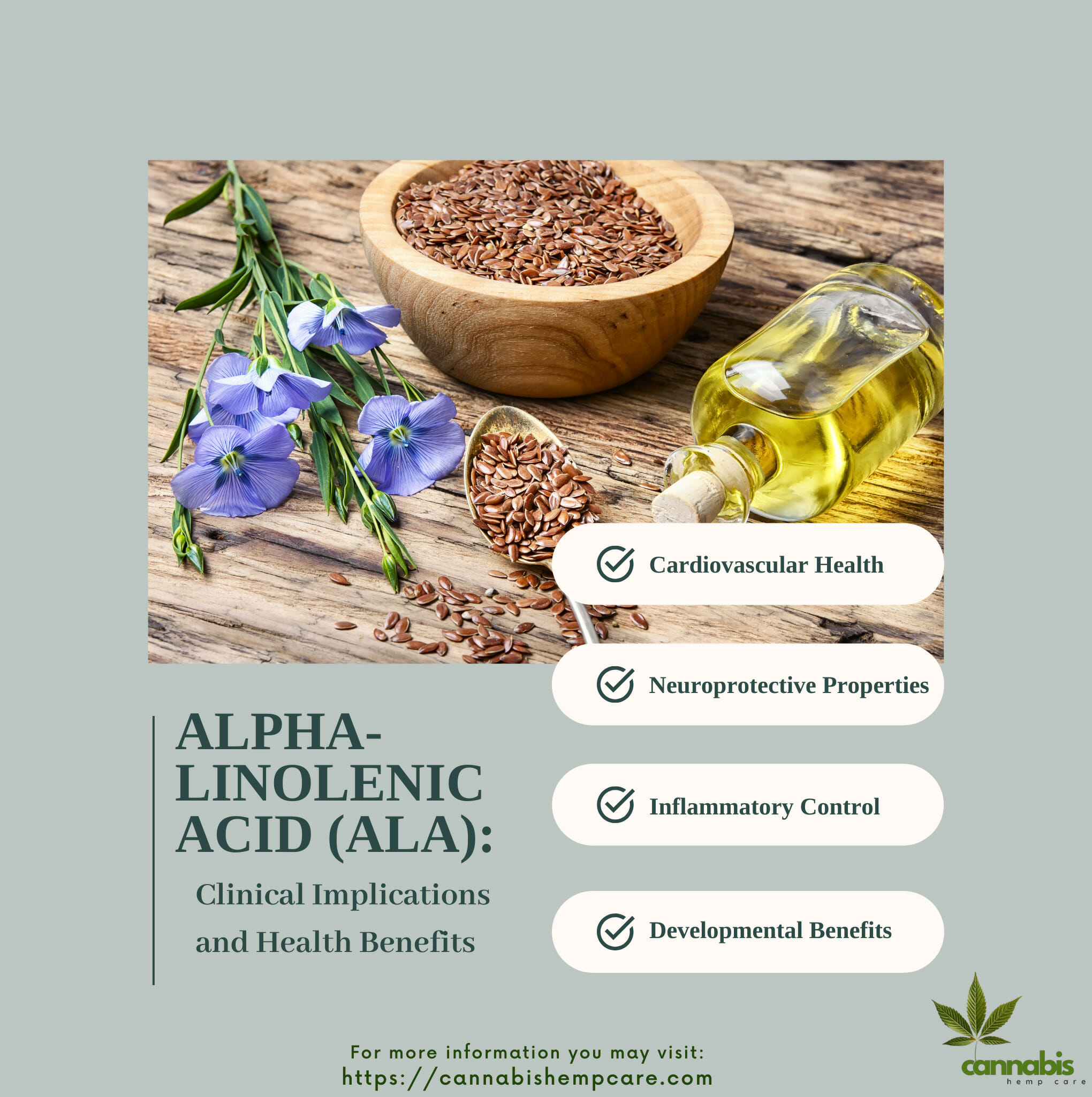
- Cardiovascular Health: ALA may protect against cardiovascular diseases (CVD). However, it should not be used to treat cardiovascular disorders without proper medical guidance due to the antiplatelet activities of certain medications like Ibrutinib.
- Neuroprotective Properties: ALA has been highlighted for its role in brain development, function, and protection against conditions like hypoxic-ischemic in rodent models. It also exhibits potential anti-depressant-like effects.
- Inflammatory Control: ALA can help reduce inflammation, a major player in conditions like heart disease, arthritis, lupus, eczema, and rheumatoid arthritis.
- Developmental Benefits: ALA is crucial for normal growth and development, so much so that infant formula is now recommended to contain alpha-linolenic acid.
Deficiency Symptoms
A deficiency of omega-3 can manifest 2 things5:
- Skin Changes: Omega-3 deficiency can result in skin problems, including rough and scaly skin.
- Skin Inflammation: In more severe cases, deficiency may lead to a red, swollen, and itchy rash.
Recognizing the signs of omega-3 deficiency is crucial for maintaining optimal health. Addressing dietary gaps promptly can help prevent uncomfortable skin-related issues associated with omega-3 deficiency.
Interactions and Precautions
The consumption of Alpha-Linolenic Acid (ALA) is generally considered very safe.
- Interaction with Ibrutinib: ALA, while generally safe, may increase the antiplatelet activities of Ibrutinib, a medication used in cancer treatment.
- Safety and Lipid Levels: Excessive ALA intake may lead to hyperlipidemia, and an abnormal increase in blood lipid levels, potentially posing health risks6.
- Weight Gain: Overconsumption of ALA, being a calorie-dense nutrient, may contribute to weight gain.
- Prostate Cancer: Some studies suggest a possible association between high ALA consumption and an increased risk of prostate cancer, but this evidence is not yet conclusive.
While Alpha-Linolenic Acid (ALA) offers numerous health benefits, its potential interactions and precautions must be considered to ensure safe and effective consumption. Always seek professional guidance for personalized dietary recommendations.
Current Research and Controversies
- Cancer: ALA is being investigated for its role in cancer prevention.
- Western Diets: Characterized by an imbalance of omega-3 to omega-6 ratios, requiring supplementation.
- Cardiovascular Disorders: Should not be used to treat cardiovascular disorders without medical supervision.
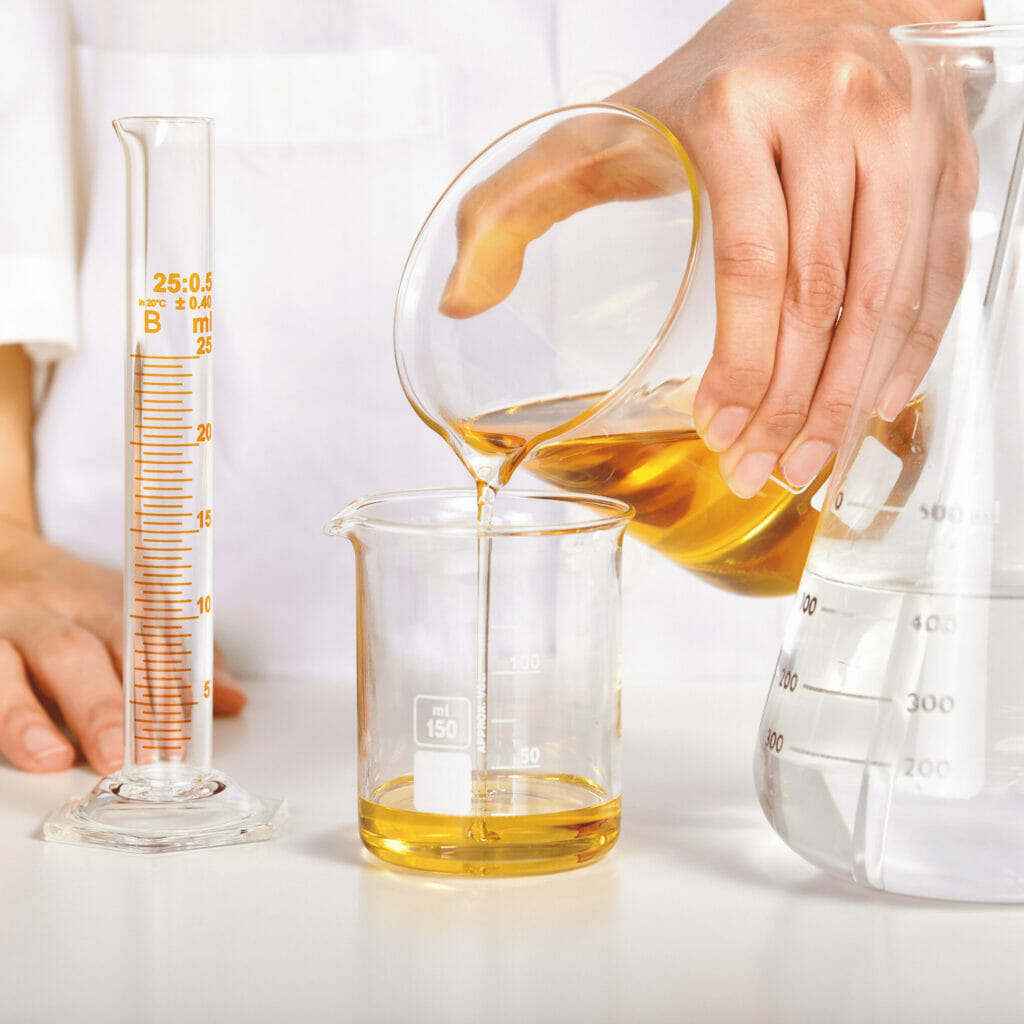
Final Thoughts
Alpha-linolenic acid (ALA) remains an essential nutrient required for normal health, cardiovascular well-being, and neurological vitality. Its role in reducing inflammation, controlling lupus, eczema, and rheumatoid arthritis, and its potential to prevent heart disease and stroke makes it a nutraceutical with significant health benefits.7 While ALA has shown promise in various therapeutic areas, it is essential that dietary supplements be taken only under the supervision of a knowledgeable healthcare provider.
Thus, ALA holds a multifaceted role in human health and is deserving of further research to unlock its full potential.
FAQs on Alpha-Linolenic Acid (ALA)
What is the function of alpha-linolenic acid (ALA)?
ALA serves a vital function in reducing blood pressure, blood triglycerides, inflammation, and the incidence of cardiovascular diseases. It also plays a crucial role in promoting normal growth and development.
What are good dietary sources of alpha-linolenic acid (ALA)?
Flaxseed oil, canola oil, soybean oil, perilla oil, and walnut oil are excellent dietary sources rich in ALA.
What are the benefits of taking ALA?
ALA supplementation can lead to various advantages, including reducing inflammation, aiding in weight loss, and lowering the risk of heart disease. It also supports brain health and development.
Is alpha-linolenic acid (ALA) considered an anti-inflammatory agent?
Yes, ALA is acknowledged for its anti-inflammatory properties, making it effective in addressing inflammation-related health issues.
Can ALA benefit skin health?
Yes, ALA can contribute to healthy skin by reducing inflammation. It may help alleviate skin conditions such as eczema and promote a smoother complexion.
Is ALA safe for kidney health?
ALA is generally safe for kidney health and may even help decrease the risk of acute kidney injury. However, individuals with specific kidney conditions should consult healthcare professionals for personalized advice.
Is ALA suitable for vegetarians and vegans?
Yes, ALA is an omega-3 fatty acid primarily found in plant-based sources, making it a valuable dietary component for individuals following vegetarian or vegan diets.
Sources
- Blondeau, Nicolas, et al. “Alpha-Linolenic Acid: An Omega-3 Fatty Acid with Neuroprotective Properties—Ready for Use in the Stroke Clinic?” BioMed Research International, vol. 2015, 2015, www.ncbi.nlm.nih.gov/pmc/articles/PMC4350958/, Accessed 20 Sept. 2023. ↩︎
- Harris, William S. “Alpha-Linolenic Acid.” Circulation, vol. 111, no. 22, 7 June 2005, pp. 2872–2874, https://doi.org/10.1161/circulationaha.105.545640. Accessed 19 May 2022. ↩︎
- Alpha-Linolenic Acid Information | Mount Sinai – New York.” Mount Sinai Health System, 20 Sept. 2023, www.mountsinai.org/health-library/supplement/alpha-linolenic-acid. Accessed 20 Sept. 2023. ↩︎
- Harvard T.H. Chan. “Omega-3 Fatty Acids: An Essential Contribution.” The Nutrition Source, 22 May 2019, www.hsph.harvard.edu/nutritionsource/what-should-you-eat/fats-and-cholesterol/types-of-fat/omega-3-fats/. Accessed 20 Sept. 2023. ↩︎
- “Omega-3 (Alpha-Linolenic Acid) | HSIS.” Www.hsis.org, 20 Sept. 2023, www.hsis.org/a-z-food-supplements/omega-3-alpha-linolenic-acid/. Accessed 20 Sept. 2023. ↩︎
- Alpha-Linolenic Acid (Ala): Uses, Side Effects, Interactions, Dosage, and Warning.” Www.webmd.com, 20 Sept. 2023, www.webmd.com/vitamins/ai/ingredientmono-1035/alpha-linolenic-acid-ala. ↩︎
- Alpha-Linolenic Acid – an Overview | ScienceDirect Topics.” Www.sciencedirect.com, 20 Sept. 2023, www.sciencedirect.com/topics/agricultural-and-biological-sciences/alpha-linolenic-acid. ↩︎

